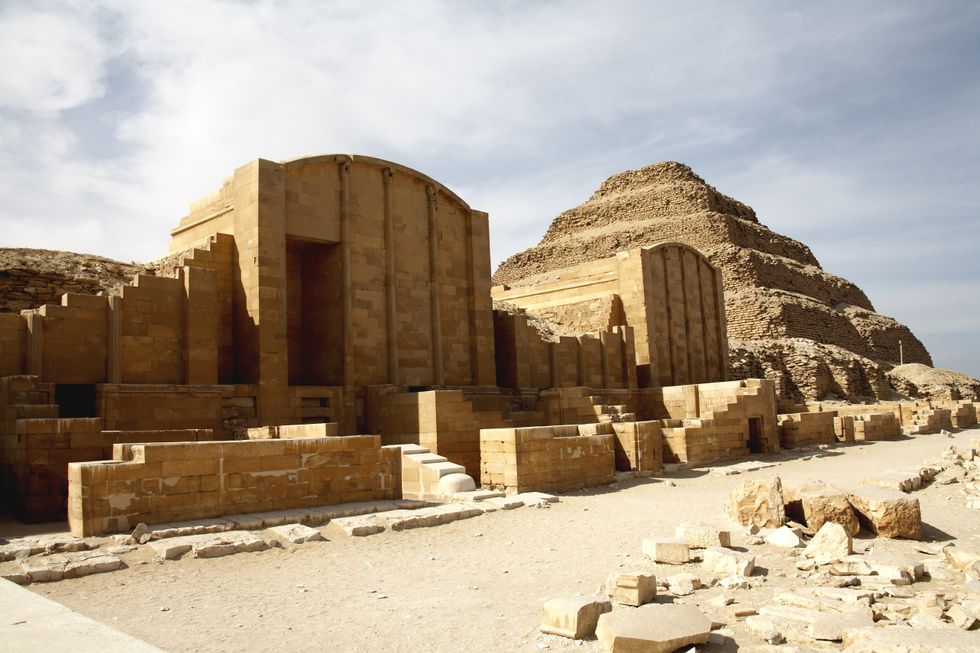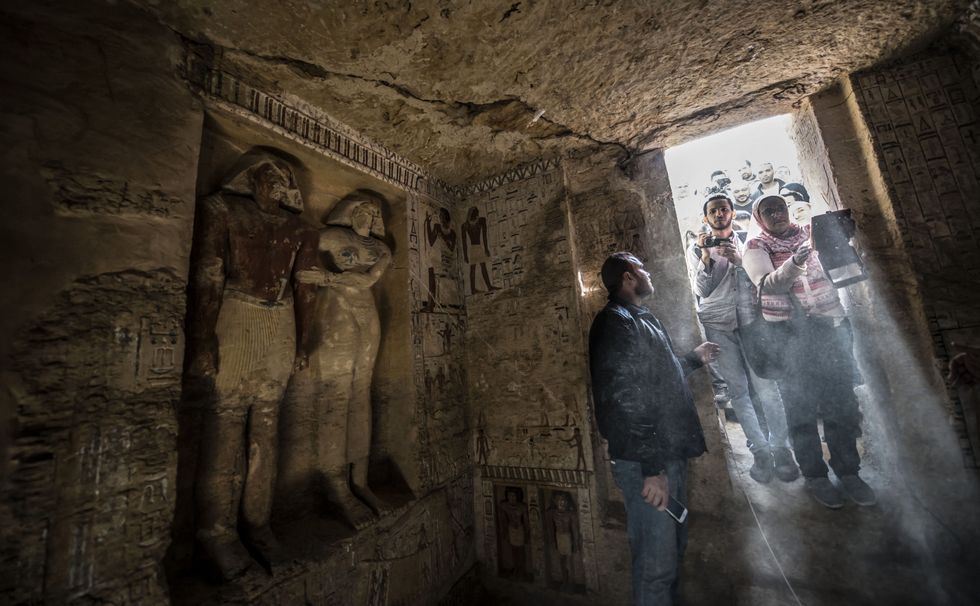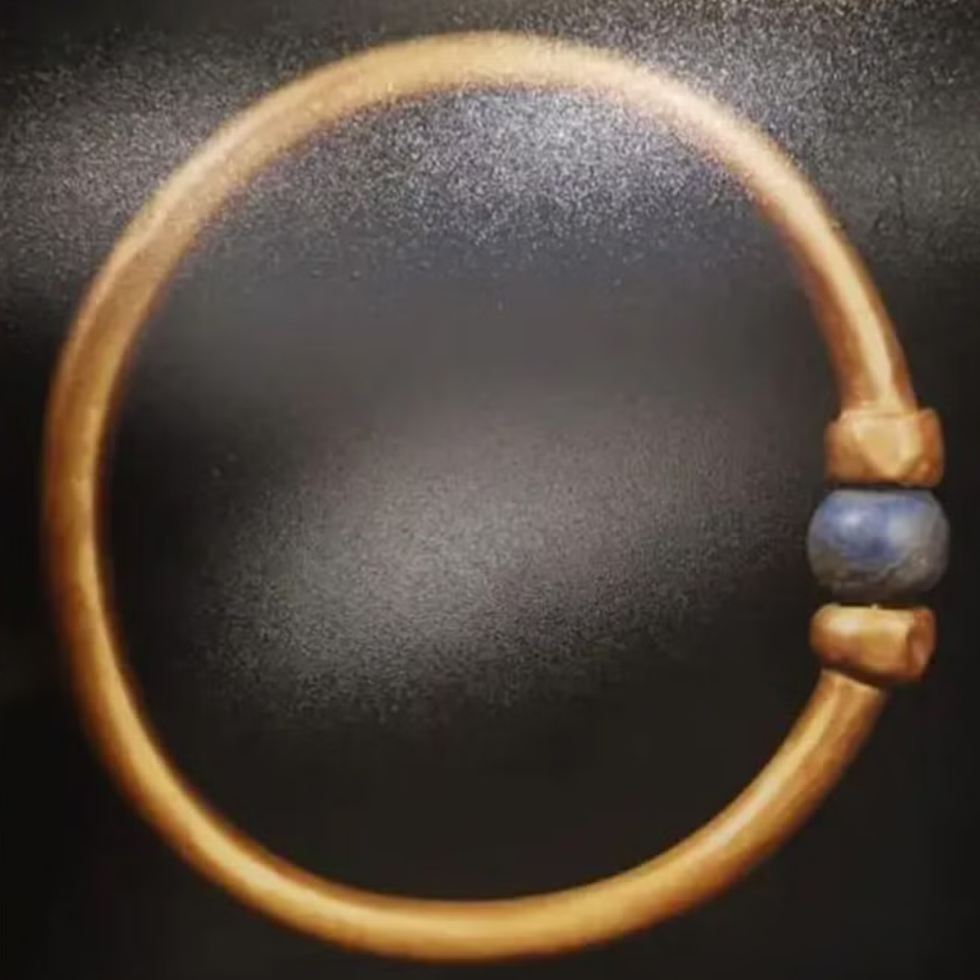Fears of 'divine punishment' after 4,000-year-old painting disappears from 'cursed' Egyptian tomb

Officials have launched a probe into the chilling mystery - which has only now been brought to light
Don't Miss
Most Read
Latest
Fears of "divine punishment" are rising after a 4,000-year-old painting vanished from a "cursed" ancient Egyptian tomb.
The artefact, a carved relief, went missing from the tomb of Khentika at the Saqqara necropolis near Cairo.
A British research team noticed it had vanished in May, but authorities have only now revealed details of the mysterious disappearance.
Officials disclosed the disappearance earlier this week, prompting the Ministry of Tourism and Antiquities to launch an investigation.
 Saqqara is considered one of Egypt's most significant archaeological sites | GETTY
Saqqara is considered one of Egypt's most significant archaeological sites | GETTYAn archaeological panel has been assembled to catalogue the tomb's remaining contents while investigators pursue leads into the theft.
The stolen artefact measured approximately 16 by 24 inches and featured representations of Egypt's ancient calendar system.
It illustrated the year's division into three distinct periods corresponding with the Nile's natural cycles.
These seasons comprised Akhet, the flooding period; Proyat, when crops were planted; and Shomu, the harvest time.
The tomb itself bears a series of chilling markings - a rare distinction among Egypt's mastaba burial sites.
MORE ARCHAEOLOGY HEADLINES:

PICTURED: Guests enter a newly-discovered tomb at the Saqqara necropolis. The carved relief went missing from the tomb of Khentika at the same necropolis in May
|GETTY
According to British Egyptologist Harry James, who studied the site during the 1950s, these marked warnings threatened trespassers with retribution from the gods.
The burial site forms part of the extensive cemetery complex at Memphis, Egypt's former capital, which has held Unesco World Heritage status since the 1970s.
The necropolis encompasses renowned monuments including the Giza Pyramids and Djoser's step pyramid, alongside lesser-known structures at Abu Sir, Dahshur and Abu Ruwaysh.
Khentika's mastaba - a kind of small raised structure above a grave - dates to the sixth dynasty of the Old Kingdom period, spanning approximately 2700 to 2200 BC.
Archaeologists uncovered the tomb during the 1950s, though it remained sealed from 2019 until the recent British mission's work.

An image of the 3,000-year-old golden bracelet which was also revealed to have gone missing this week
|MINISTRY OF TOURISM AND ANTIQUITIES
And news of the theft was revealed at the same time as another high-profile case: a 3,000-year-old golden bracelet that belonged to Pharaoh Amenemope.
Tourism and Antiquities Minister Sherif Fathy revealed in televised remarks on Saturday that the bracelet, which featured a lapis lazuli bead, disappeared from a museum on September 9 whilst staff prepared items for an Italian exhibition.
Ms Fathy attributed the theft to "laxity" in following security protocols at the institution.
Her Interior Ministry reported that four individuals face questioning, amongst them a museum restoration specialist who allegedly admitted passing the bracelet to a silver shop proprietor in Cairo's Sayyeda Zainab area.
The artefact subsequently changed hands through multiple dealers for roughly £3,000 before being melted into new jewellery pieces - destroying it forever.










